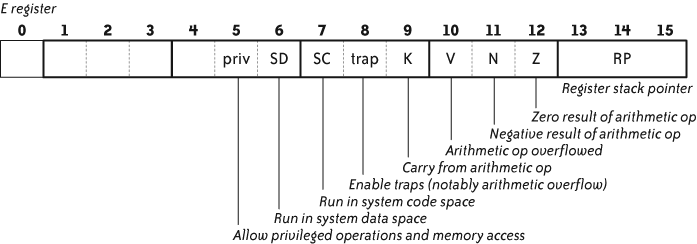Processor Architecture
The CPU is a custom TTL design that shows significant similarities to the Hewlett-Packard 3000. It has virtual memory with a 2 kB page size, a stack-based instruction set, and fixed-width 16-bit instructions. Raw processor speed is about 0.8 MIPS per processor, giving 13 MIPS in a fully equipped 16-processor system.
Memory Addressing
The T/16 is a 16-bit machine, and the address space is limited to 16 bits in width. Even in the late 1970s, this was beginning to become a problem, and Tandem addressed it by providing a total of four address spaces at any one time:
- User code
This address space contains the executable code. It is read-only and shared between all processes that use it. Due to the architecture (separate memory for each CPU), the code can be shared only on a specific CPU.
- User data
The data space for user processes.
- System code
The code for the kernel.
- System data
The kernel data space.
With one exception, only one data space and one code space is accessible at any one time. They are specified in the Environment Register, which contains a number of flags describing the current CPU state, as shown in Figure 8-2.

Figure 8-2. E register
The SD bit determines the data space, and the
SC bit determines the code space. The
SG-relative addressing mode is an exception to this
rule: it always addresses system data.
In keeping with the aim of reliability and data integrity, ...
Get Beautiful Architecture now with the O’Reilly learning platform.
O’Reilly members experience books, live events, courses curated by job role, and more from O’Reilly and nearly 200 top publishers.

